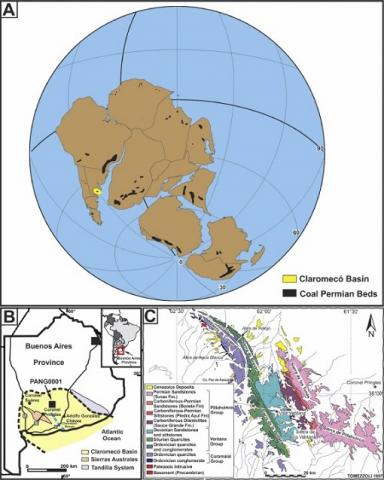Guadalupe Arzadún, María Eugenia Cisternas, Nora Noemí Cesaretti, Renata NelaTomezzoli
2 017
GeoResJ Volume 14, December 2017, Pages 121-134
The PANG0001 well, situated in the Claromecó Basin, Argentina, involves rocks that belong to the Tunas Formation [29], Permian of Gondwana. It is composed of fine to medium sandstones intercalating with black and green mudrocks and three coal seams up to 3 m thick. In the coals, a petrographic analysis was carried out to analyze the depositional environment and the diagenesis level reached by the Tunas Formation. The coals are composed of mono-maceral bands of Collotelinite and Gelinite, from the Vitrinite Group, or Fusinite, from the Inertinite Group. They were deposited in a wet swampy forest with rises and decreases of the phreatic level. The presence of inertinite or charcoal evidence the occurrence of palaeo-fires during the Permian. The vitrinite reflectance values are between 1.3% and 2.38%. The coals classify as semiantracitic to low volatile bituminous, with 10 to 25% of volatile matter. The vitrinite reflectance values indicate temperatures between 140 °C and 190 °C. The Tunas Formation reaches the oil to methane gas window, into a catagenesis to metagenesis range related to the organic matter diagenesis. Coal petrography is a good method for the environment and diagenesis analyses applied to the Tunas Formation.

